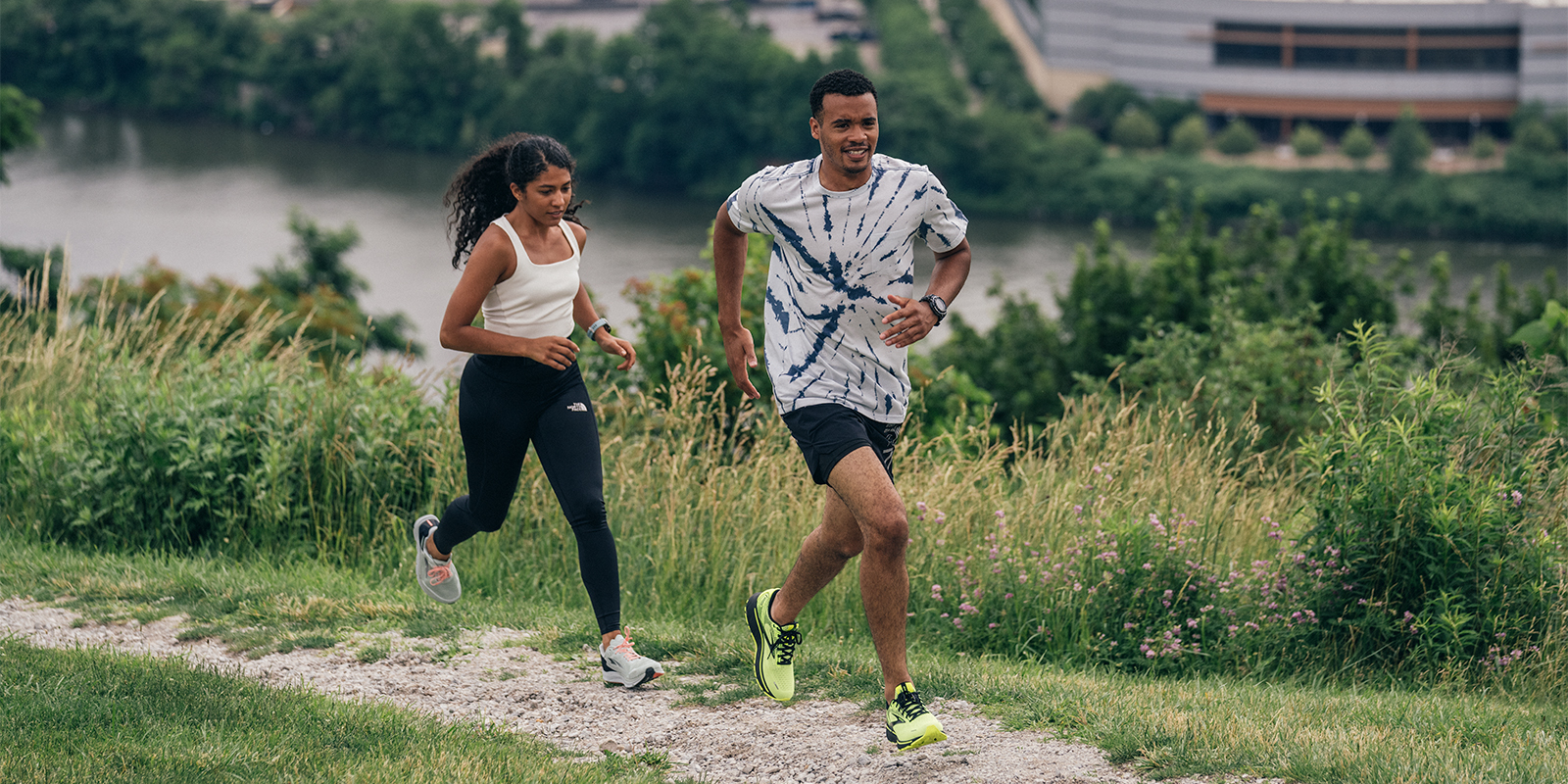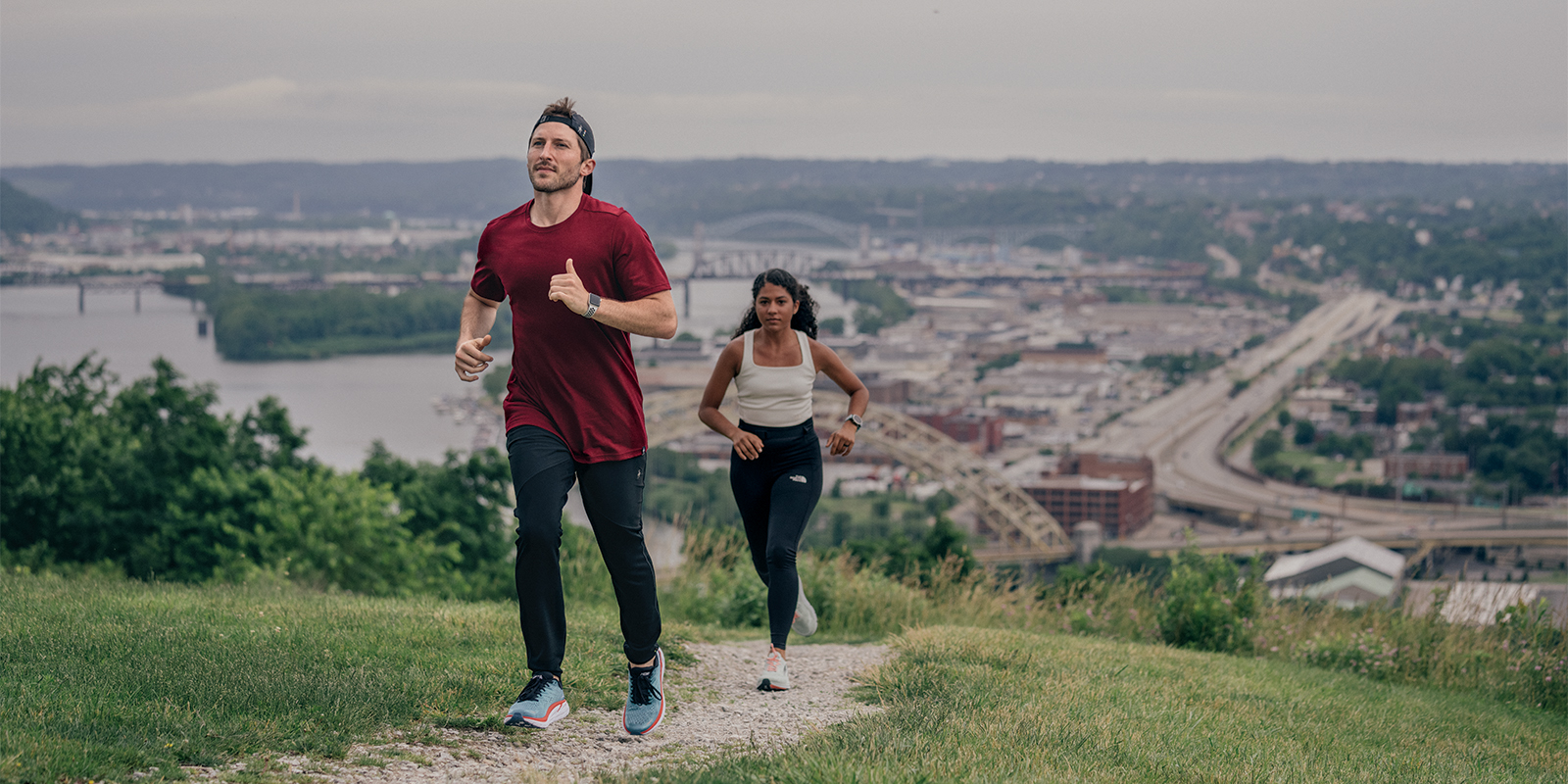Shopping for running tights might seem like a simple endeavor—grab any pair of black leggings off the rack and make sure they fit. No so fast. Selecting the ideal pair of running tights has to do with what type of conditions you’ll most often be facing, how you like your tights to fit, and features, like if you need pockets (and where you want them).
In this article, we’ll break down options for tights based on weather conditions, then discuss fit and features to help you zero-in on the best pair for your three-season running needs.
Weather Conditions
Cool
When the temperature is cool and not cold, capri-length tights that extend below the knee (but stop above the ankle) offer great versatility. These provide more coverage than shorts while leaving lower legs free to breathe.
This length tight is most common in women’s styles, but men’s options exist; they’re often called “¾ Tights” or “¾-Length Tights” in men’s styles.
Capris and ¾-Length Tights are most frequently made out of a thin, stretchy, body-hugging polyester-blend fabric that’s breathable and wicks sweat. Variations in blends offer different benefits.
Thin fabrics with a sleek and smooth, shiny finish perform better when wet from heavy sweat or rain.
Knit fabrics with a soft, brushed finish and feel are warmer, but don’t shed moisture as well and are slower to dry.
Cold/Snow
Cold weather calls for full-length tights, and you’ll want to choose fabric options based on conditions.
Cold and rainy: Thin, sleek tights are the best option. As with capris, these shed moisture and dry quickly, while the thicker/heavier options can start to sag when wet.
Cold and dry: A thicker, brushed finish works well, and, depending on the temperature and the heat you generate, won’t be overkill like insulated tights could be.
Cold and snowy: Tights that combine a brushed interior with a smooth exterior are often referred to as “insulated” tights. They’re a good choice for snowy conditions, as the smooth exterior sheds snow while the interior boosts warmth.
Windy/Frigid
If you’re one of those all-conditions runners who heads out in even the most bone-chilling wind, invest in a pair of insulated tights with windblocking material on the front side. These designs often feature windblocking panels that cover your quadriceps and sometimes your shins, with more breathable fabric on the backside to let heat escape. These types of tights are often insulated as well, with a brushed, fleece-like interior helping.
An alternative option is wearing a pair of thin wind pants over insulated, brushed, or thin tights. This works well to block wind, but the temperature-regulation might not be as good as you get with windblocking tights meant to breathe well.





